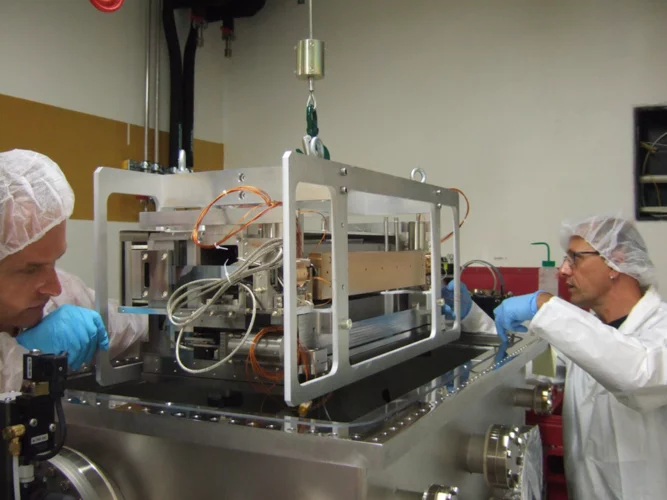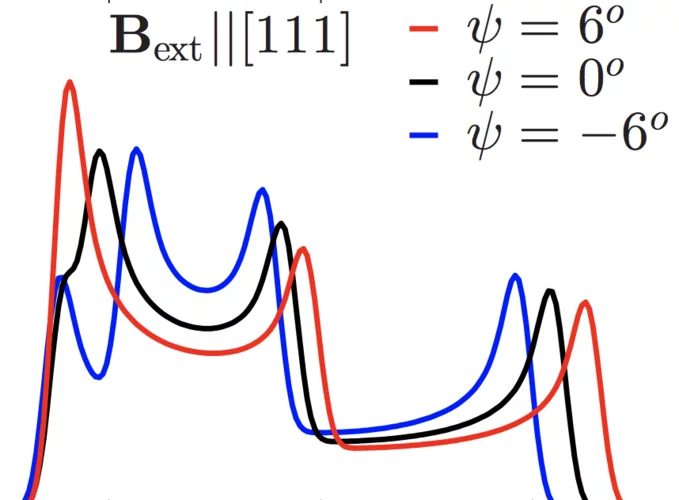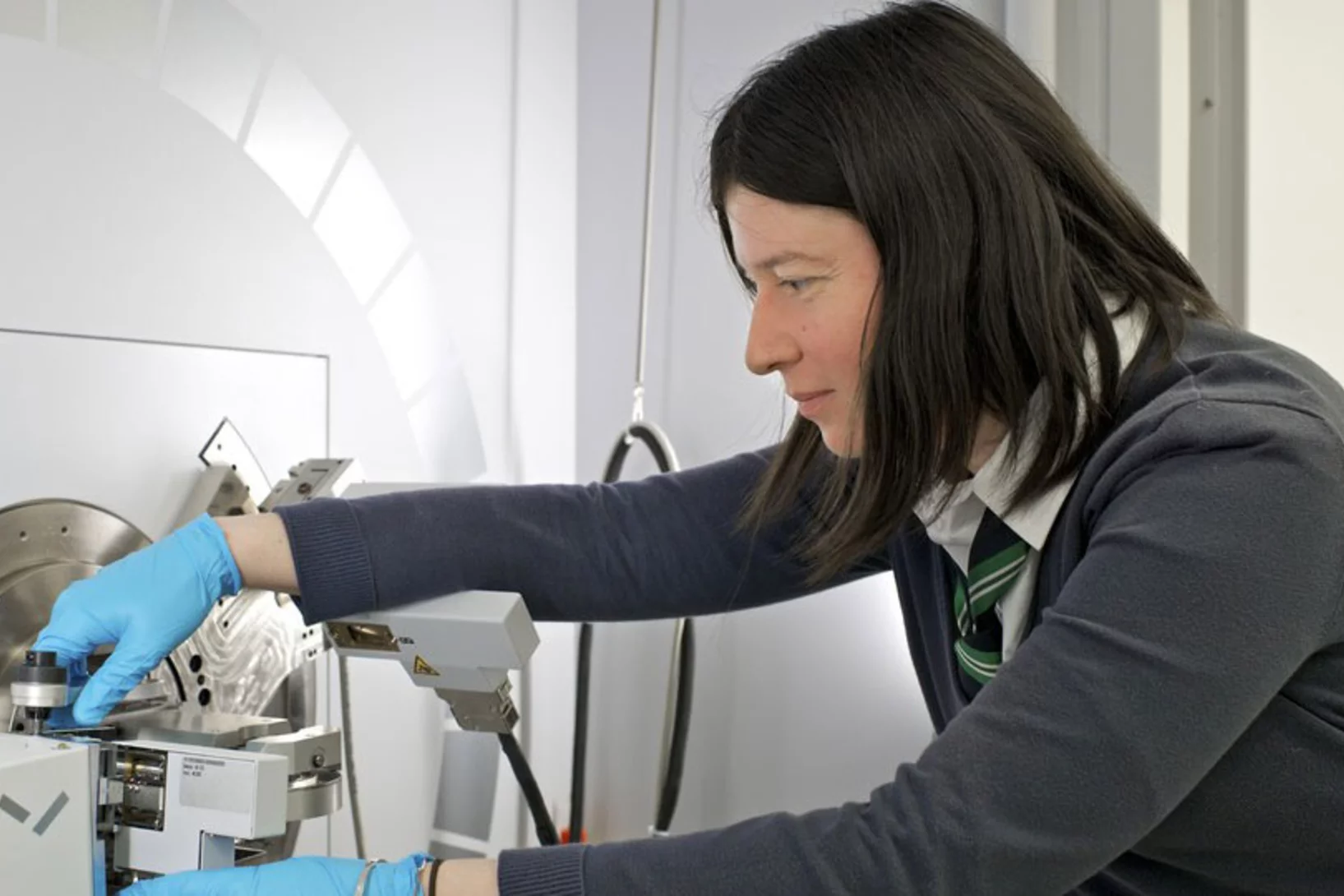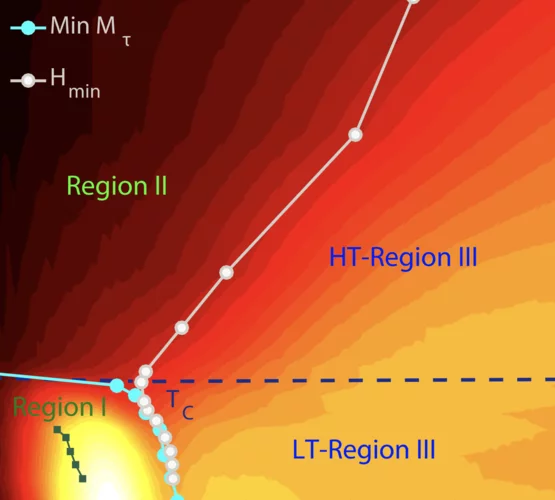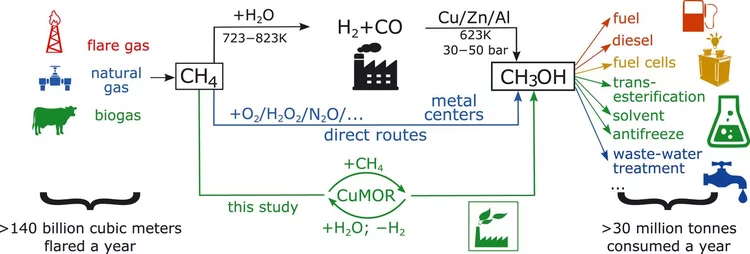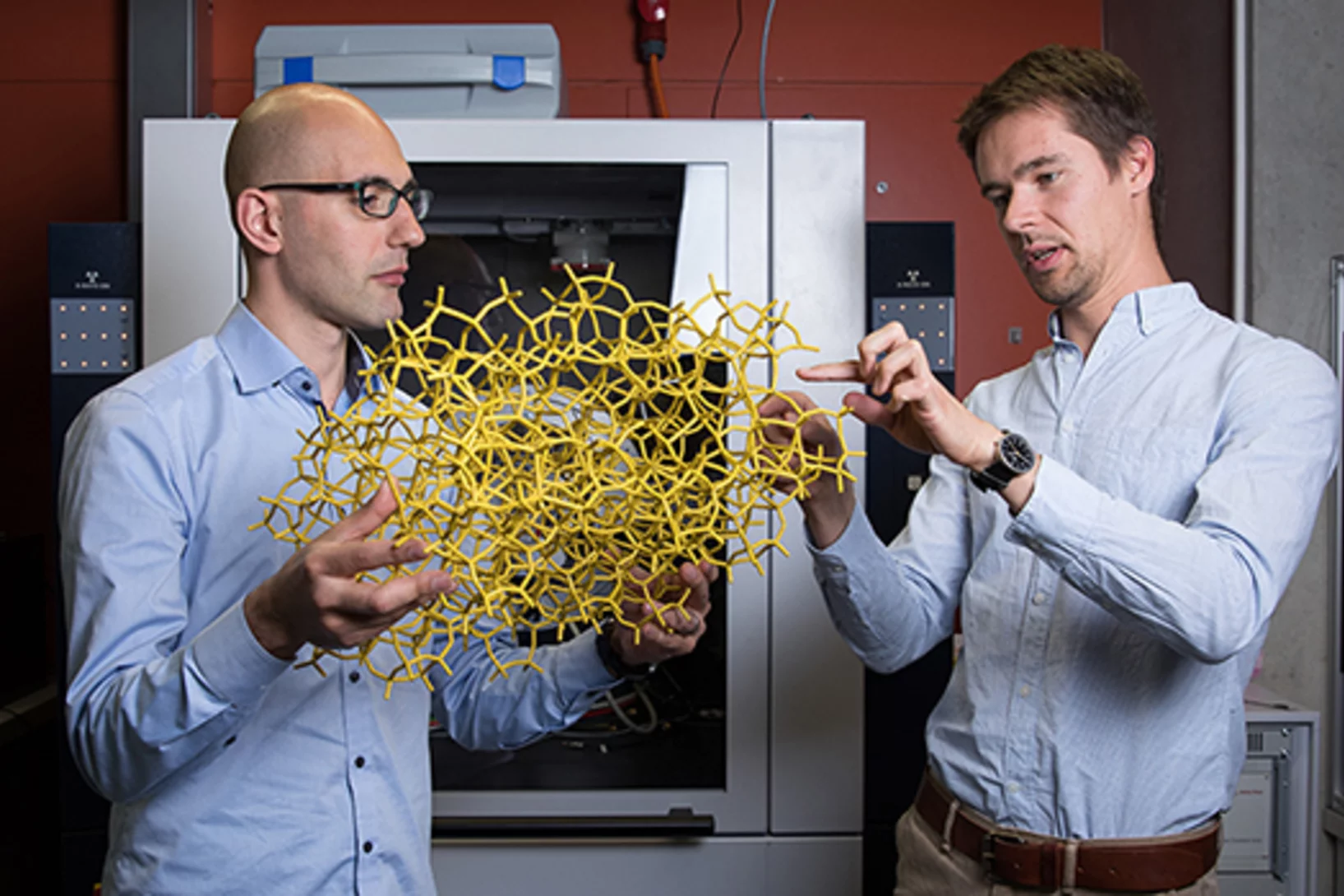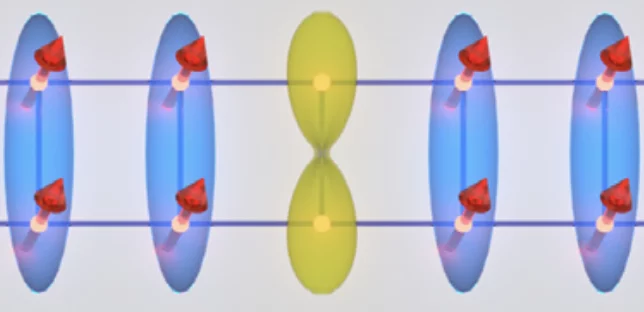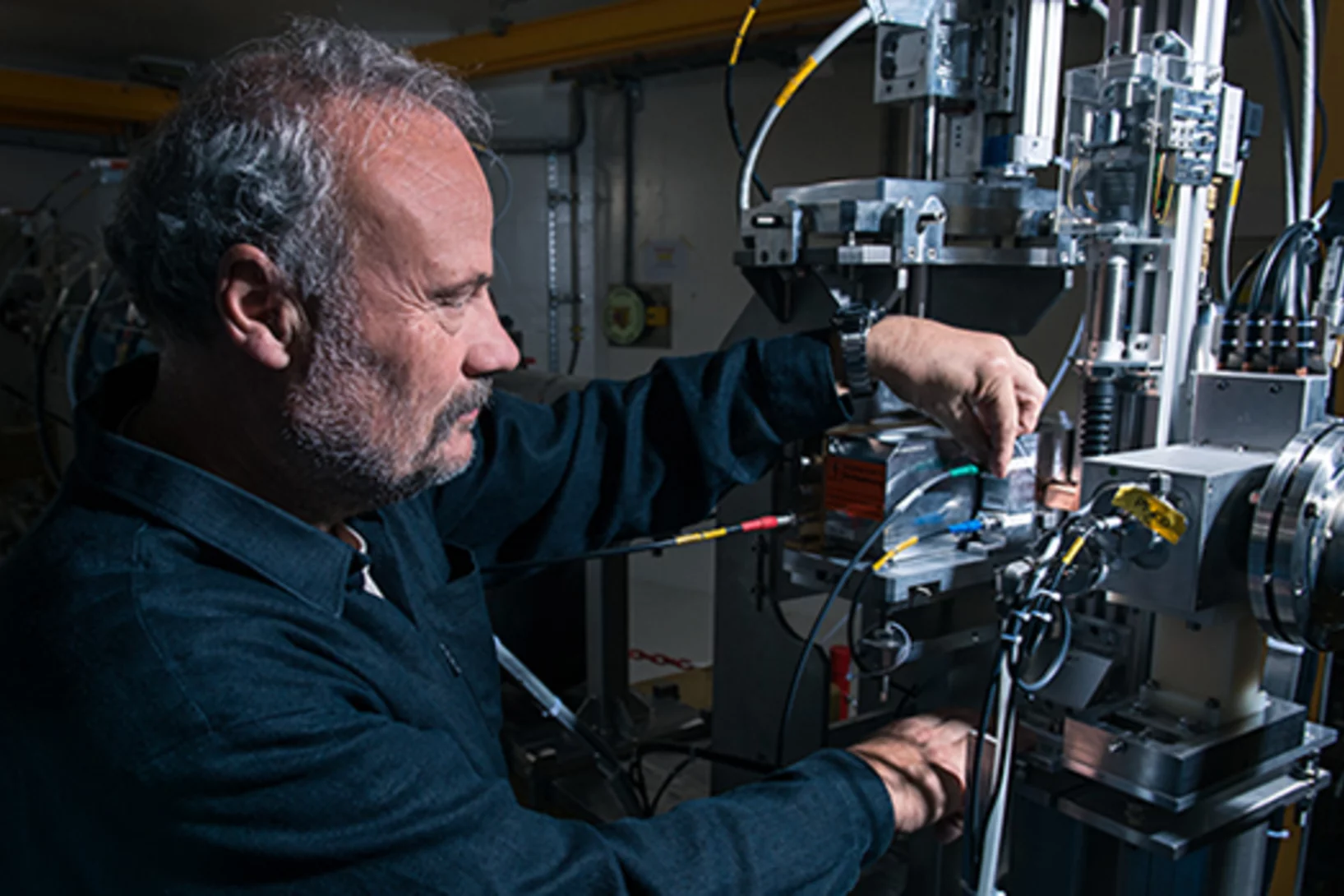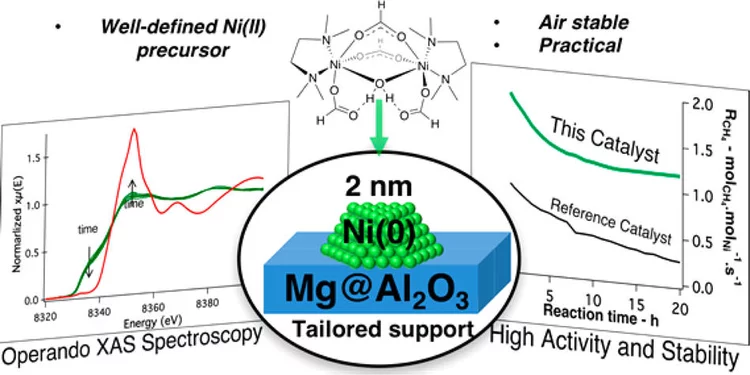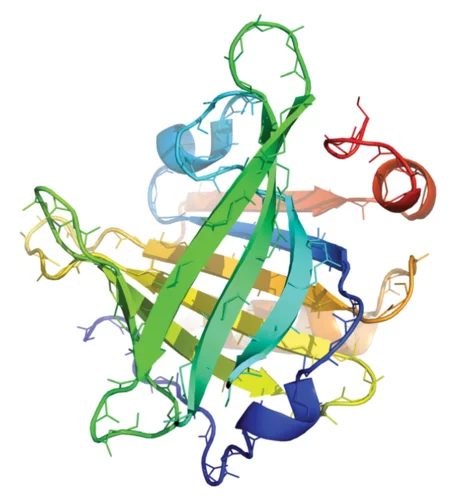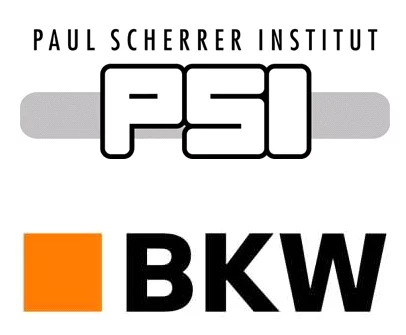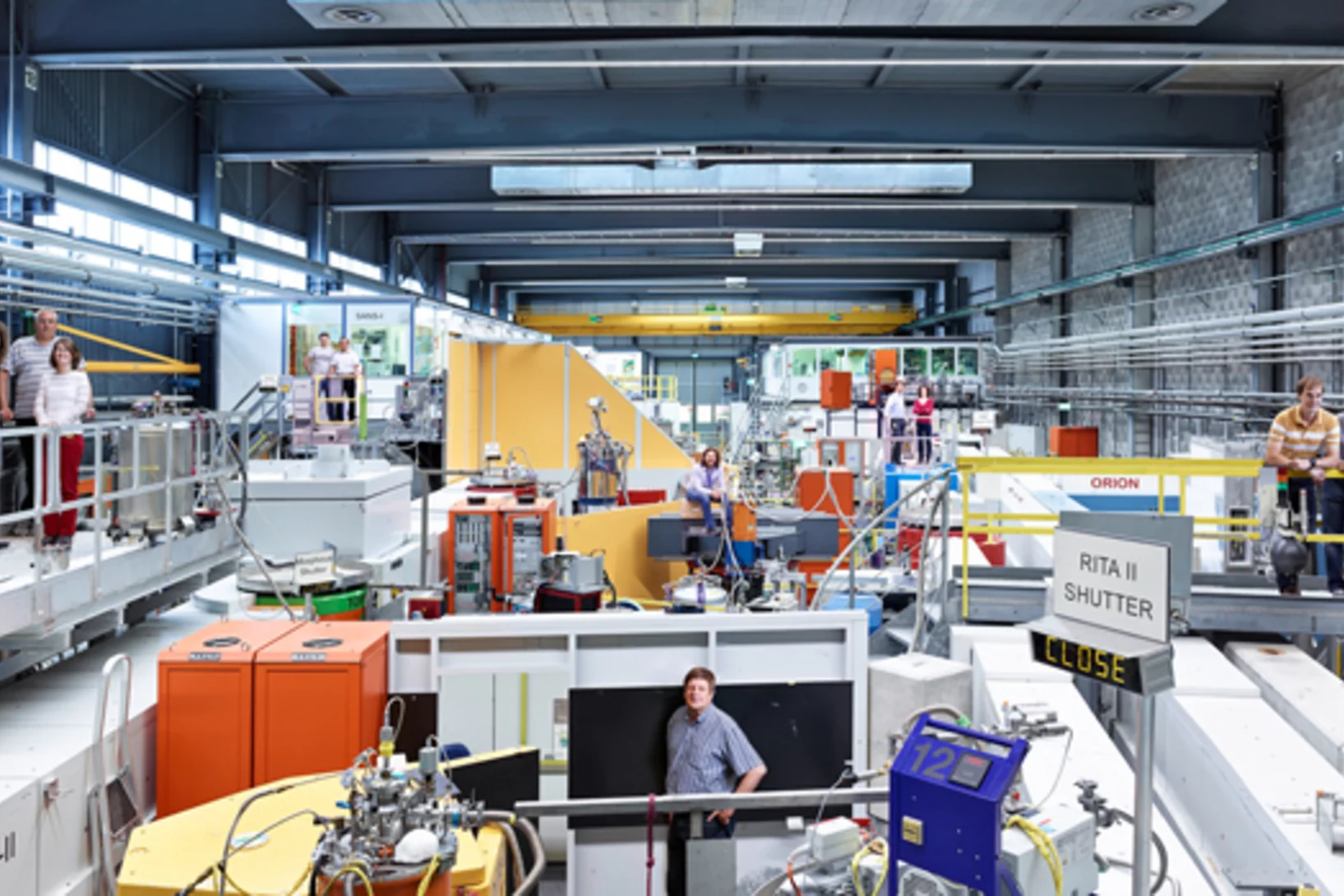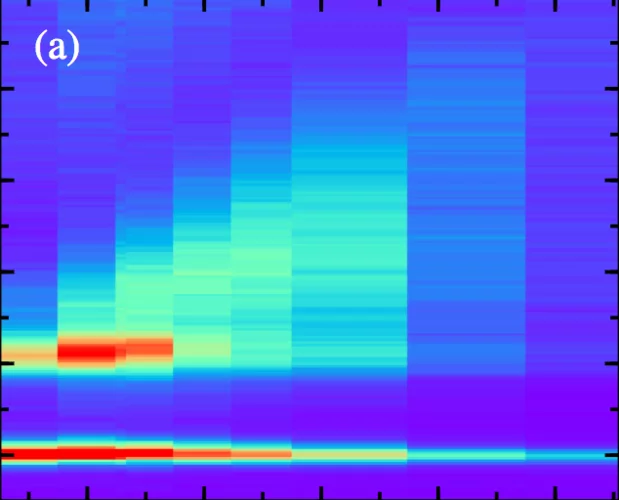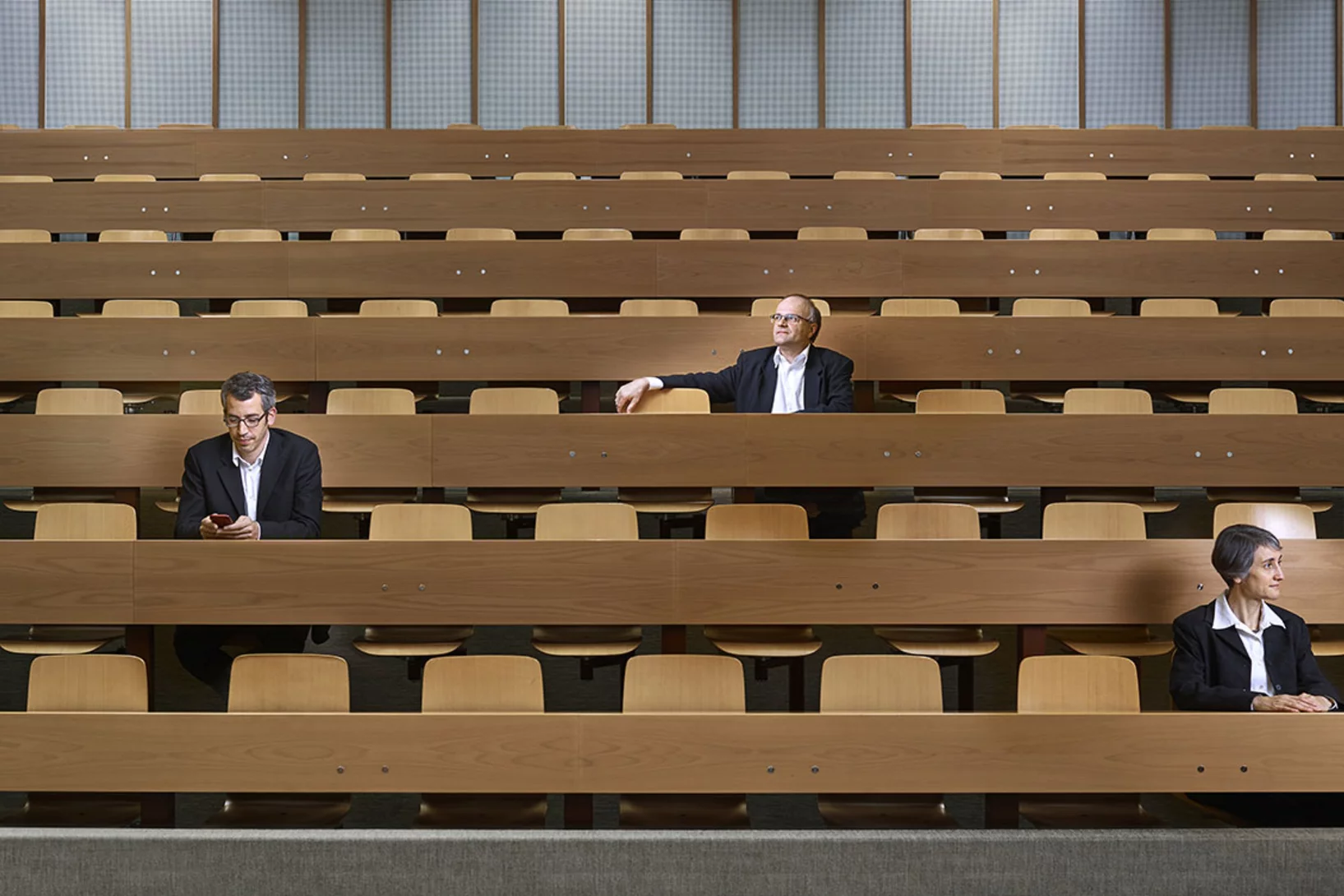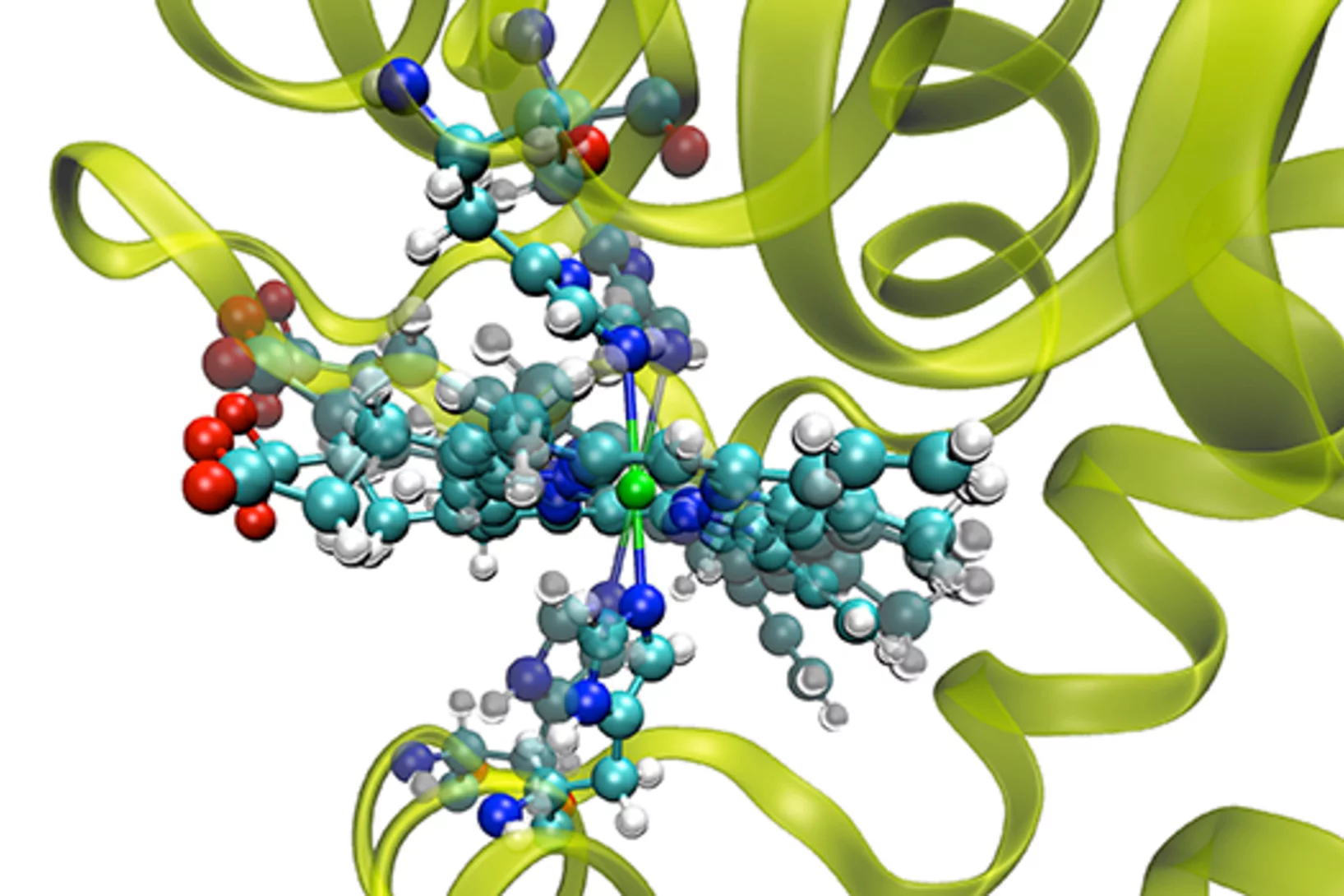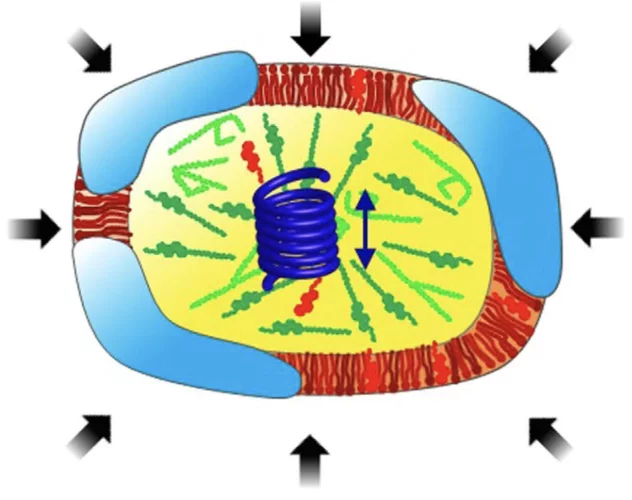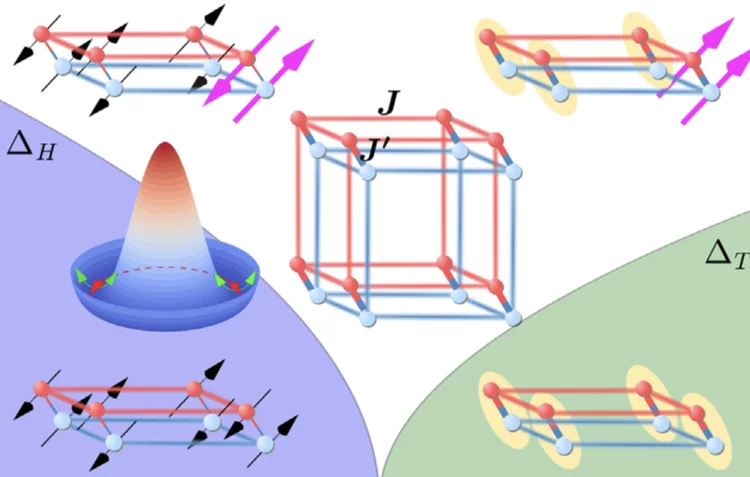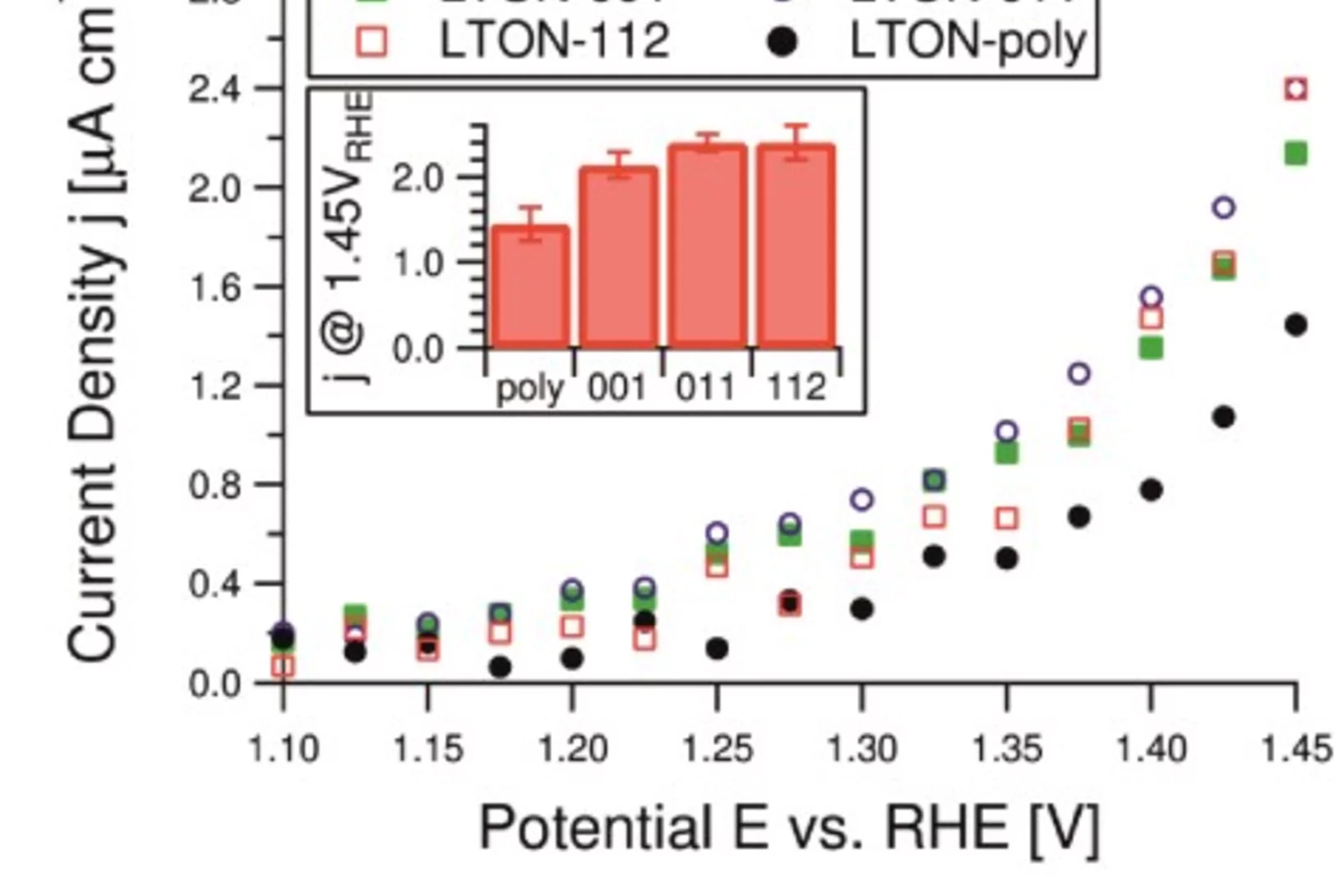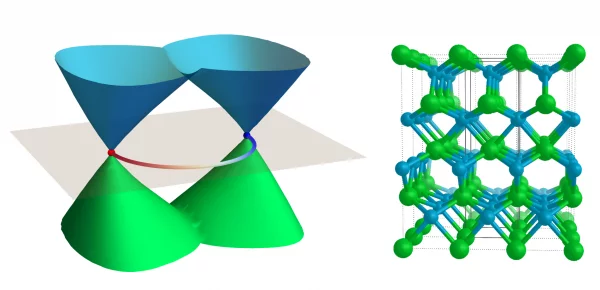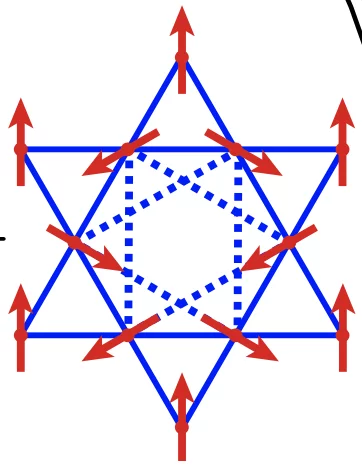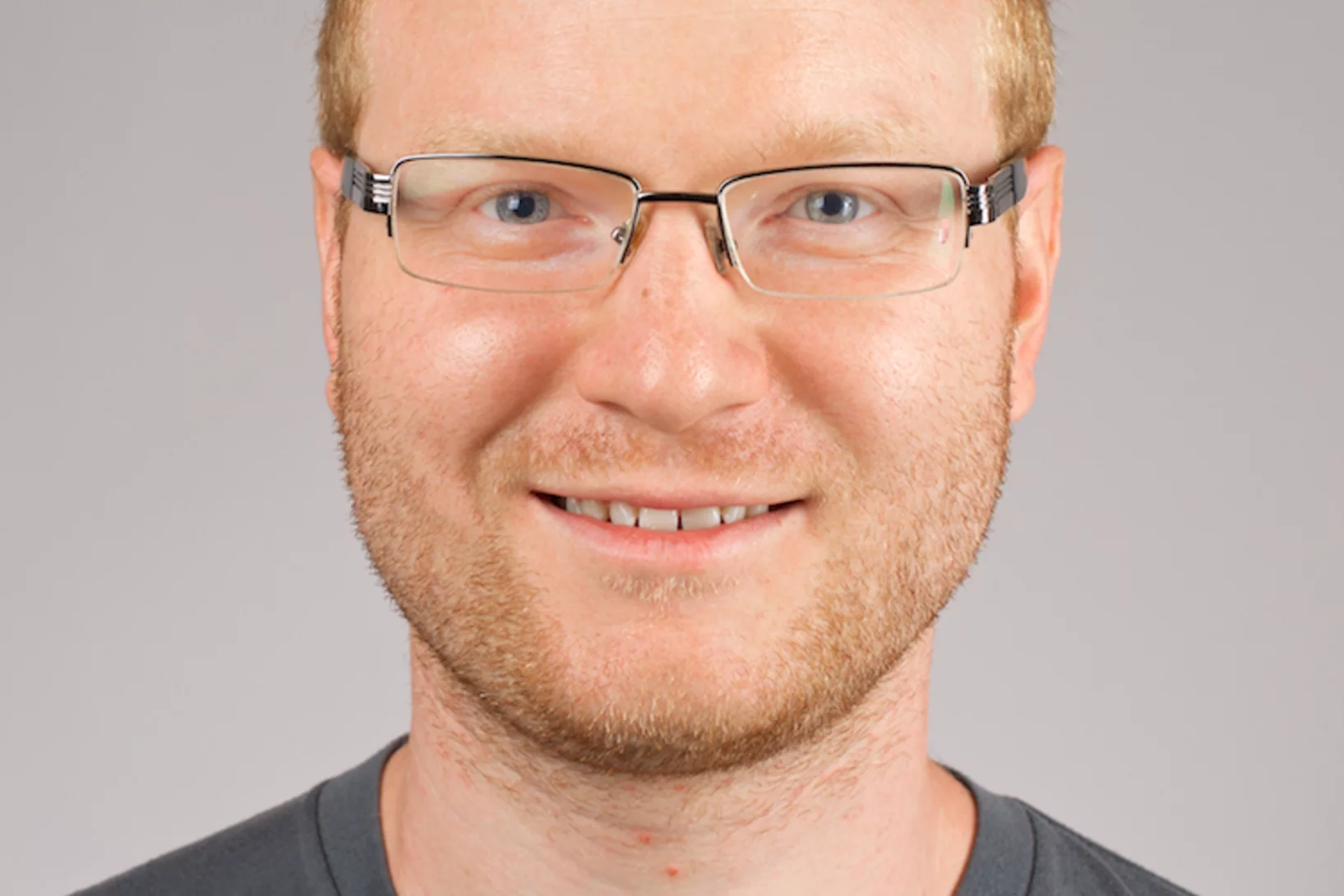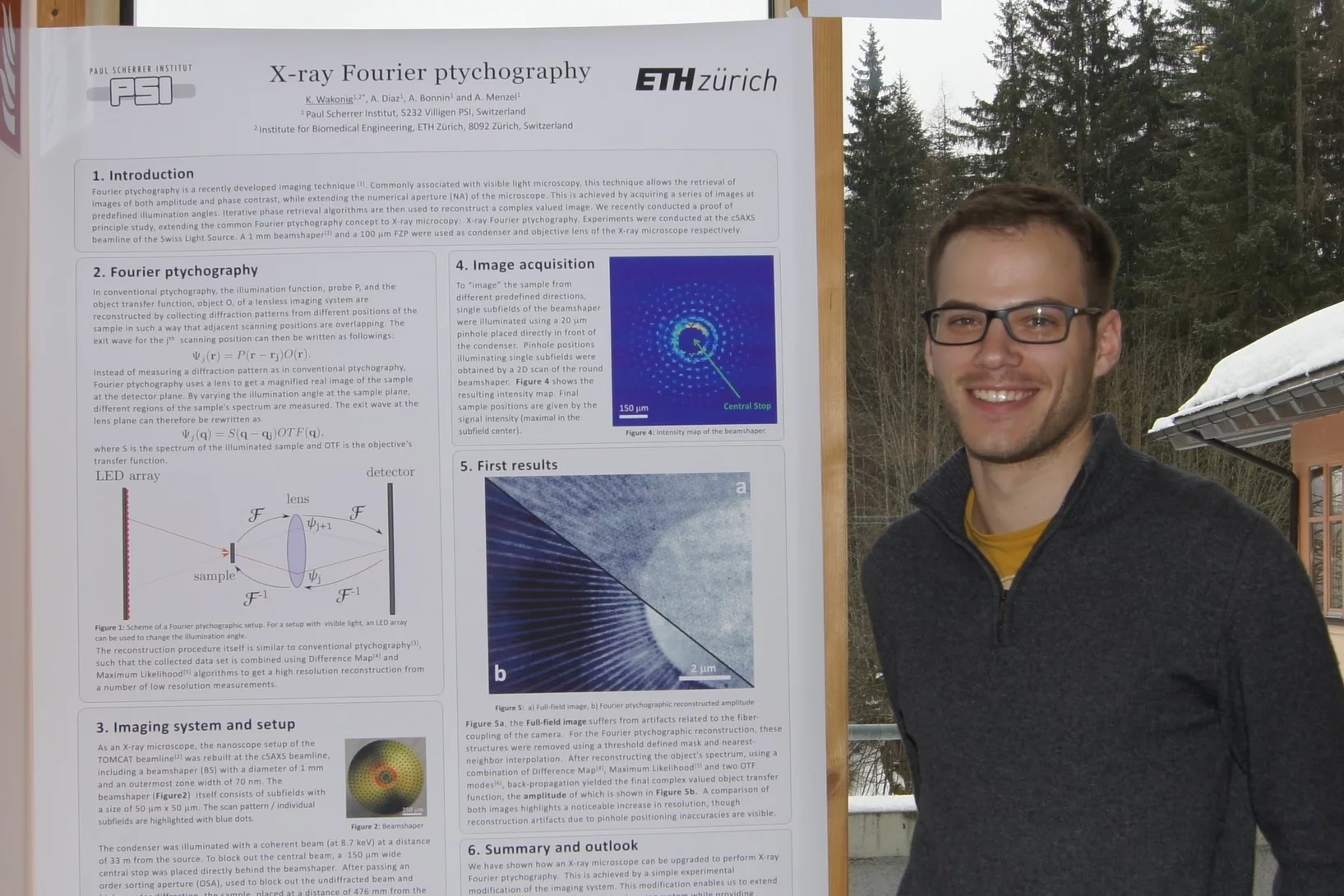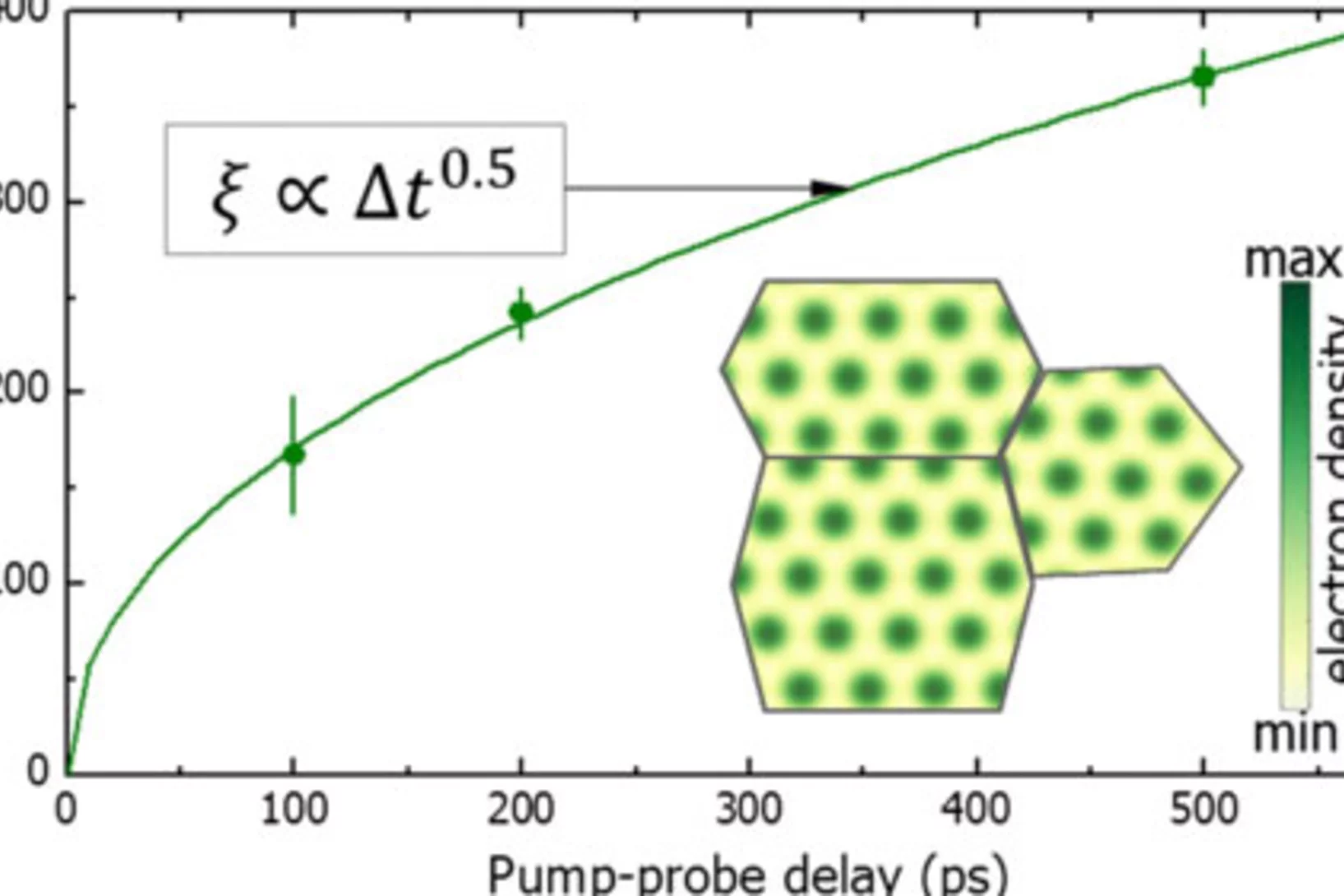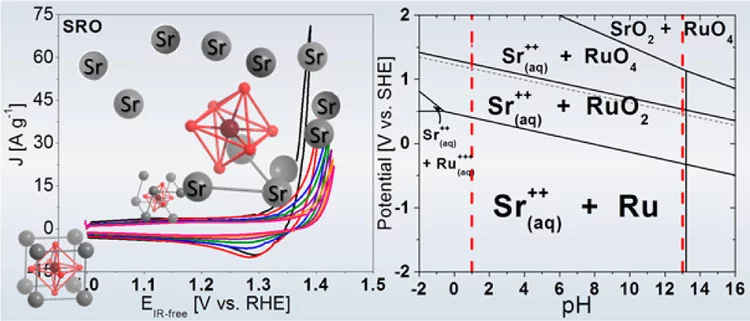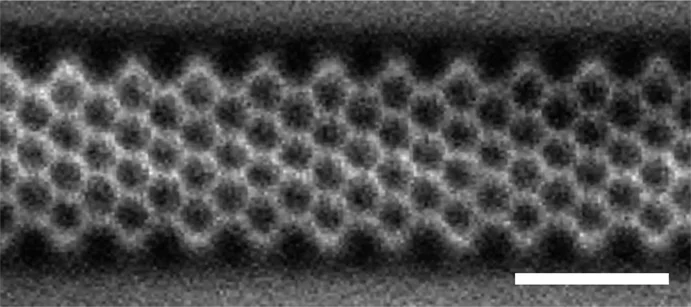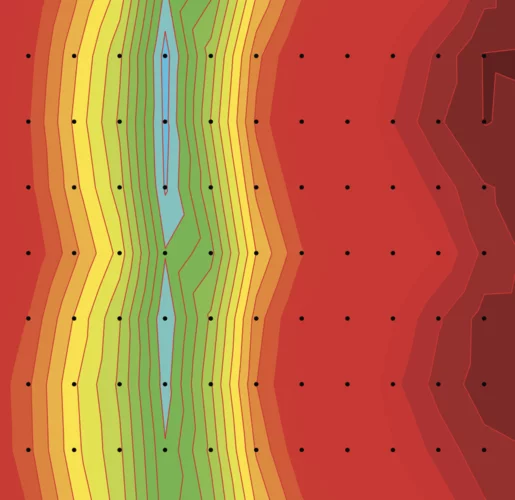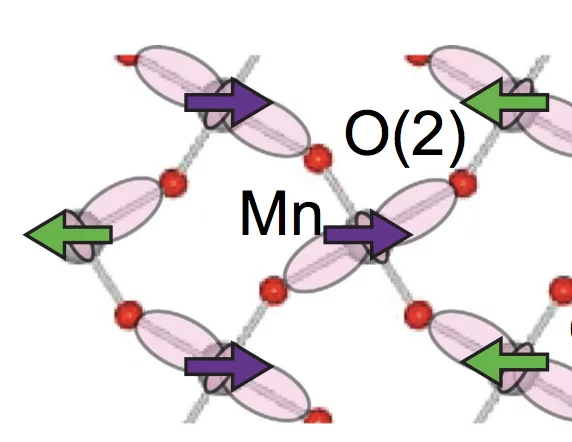Abandon de l’énergie nucléaire, développement de l’énergie solaire et éolienne, production d’énergie à partir de la biomasse, réduction de la consommation d’énergie. D’ici 2050, la Suisse doit atteindre la neutralité climatique. Un objectif ambitieux, rendu plus urgent que jamais par une situation géopolitique de plus en plus difficile. Comment faire pour mettre en place ces prochaines années un approvisionnement énergétique durable et résistant pour la Suisse? Comment les énergies renouvelables peuvent-elles être utilisées de manière optimale? Quelles sont les nouvelles technologies les plus prometteuses? Au PSI, des chercheurs s’efforcent de trouver des réponses à ces questions décisives.
First SwissFEL Mirror Units ready to take X-rays
On May 11, 2017 the vacuum chambers of the first two offset mirrors have been closed eventually with the final gold- wire gasket and pumped down to ultra- high vacuum (goal: 1e-9 mbar). These mirrors are the key elements to switch the X-rays between the experimental stations. In pink beam mode they are the only optical elements for the X-rays on their way from the undulator down to the Alvra experiment.
Unconventional magnetic order in the conical state of MnSi
In the temperature-magnetic field phase diagram, the binary metallic compound MnSi exhibits three magnetic phases below Tc ≈ 29K.An unconventional helicoidal phase is observed in zero field. At moderate field intensity a conical phase sets in. Near Tc, in an intermediate field range, a skyrmion lattice phase appears.
De la poudre de quartz pour la batterie du futur
Des chercheurs en matériaux pour batteries du PSI ont développé une méthode qui leur a permis de faire des découvertes cruciales sur les processus de charge et décharge des batteries lithium-soufre. Cette méthode a révélé par ailleurs que l’addition de poudre de quartz dans la batterie augmentait l’énergie disponible dans cette dernière et réduisait notablement la perte en capacité qui intervient avec le vieillissement.
Anomalous Thermal Conductivity and Magnetic Torque Response in the Honeycomb Magnet α-RuCl3
We report on the unusual behavior of the in-plane thermal conductivity κ and torque τ response in the Kitaev-Heisenberg material α-RuCl3. κ shows a striking enhancement with linear growth beyond H = 7T, where magnetic order disappears, while τ for both of the in-plane symmetry directions shows an anomaly at the same field.
Selective anaerobic oxidation of methane enables direct synthesis of methanol
On the basis of in situ x-ray absorption spectroscopy, infrared spectroscopy, and density functional theory calculations, it was proposed a mechanism involving methane oxidation at Cu II oxide active centers, followed by Cu I reoxidation by water with concurrent formation of hydrogen.
Rendre une précieuse matière première exploitable grâce à l’eau
Lors de l’extraction du pétrole, on se contente le plus souvent de brûler le méthane, alors qu’il pourrait utilement servir de matière première à la fabrication de certains carburants et produits de l’industrie chimique. Un moyen de rendre le méthane exploitable consiste à le transformer en méthanol. Des chercheurs de l’Institut Paul Scherrer PSI et de l’ETH Zurich ont récemment développé un procédé qui permet de réaliser efficacement cette conversion à faible coût.
Welcome Andrés Laso
We warmly welcome Andrés Laso in the Laboratory of Environmental Chemistry joining the Surface Chemistry group. Andrés Laso is a trained mechanic and obtained a degree as a technician in mechanical engineering. Before joining PSI, he worked at ETH for over eight years, in the Laboratory of Physical Chemistry.
Bound States and Field-Polarized Haldane Modes in a Quantum Spin Ladder
The challenge of one-dimensional systems is to understand their physics beyond the level of known elementary excitations. By high-resolution neutron spectroscopy in a quantum spin-ladder material, we probe the leading multiparticle excitation by characterizing the two-magnon bound state at zero field.
Climbing the ladder
Quantum phenomena can lead to intriguing effects in materials, but are famously difficult to predict and understand. A combined experimental and theoretical study of a model quantum system provides insight into excitations that involve multiple particles at once.
Maîtriser la sécurité
Les faisceaux de protons peuvent soigner le cancer, mais aussi endommager des tissus sains. Pour éviter que cela n’arrive, plus de 350 tests de sécurité sont menés chaque année au Centre de protonthérapie du PSI. Le bilan est plus que satisfaisant: plusieurs milliers de patients ont été irradiées avec des protons ici, à Villigen, sans qu’un seul accident ne se produise.
Molecularly Tailored Nickel Precursor and Support Yield a Stable Methane Dry Reforming Catalyst with Superior Metal Utilization
The superior performance of molecularly tailored methane dry reforming catalyst resulted in a maximization of the amount of accessible metallic nickel in the form of small nanoparticles preventing coke deposition. Operando X-ray absorption near-edge structure spectroscopy confirms that deactivation largely occurs through the migration of Ni into the support.
Amyloid fibril systems reduce, stabilize and deliver bioavailable nanosized iron
Iron-deficiency anaemia (IDA) is a major global public health problem. A sustainable and cost-effective strategy to reduce IDA is iron fortification of foods, but the most bioavailable fortificants cause adverse organoleptic changes in foods. Iron nanoparticles are a promising solution in food matrices, although their tendency to oxidize and rapidly aggregate in solution severely limits their use in fortification.
BKW and PSI agree on partnership for safety analysis services
BKW’s Engineering Division and the Paul Scherrer Institute (PSI) joined forces to provide risk and safety analysis services in the nuclear sector. By combining their expertise, the two companies are able to solve highly complex problems in the field of nuclear safety. The range of joint services is aimed at customers from the power plant sector and supply industry, as well as public and state institutions. The collaboration will focus exclusively on the international (non-Swiss) market.
20 ans de succès: des particules pour étudier les matériaux
Matériaux pour l’électricité du futur, accumulateurs, épées de l’âge du bronze: cela fait 20 ans que les chercheurs de diverses disciplines utilisent la Source de neutrons à spallation SINQ.
Doping Dependence of Collective Spin and Orbital Excitations in the Spin-1 Quantum Antiferromagnet La2-xSrxNiO4 Observed by X-Rays
We report the first empirical demonstration that resonant inelastic x-ray scattering (RIXS) is sensitive to collective magnetic excitations in S=1 systems by probing the Ni L3 edge of La2-xSrxNiO4 (x=0, 0.33, 0.45). The magnetic excitation peak is asymmetric, indicating the presence of single and multi-spin-flip excitations.
Les agents doubles
Ils ont deux adresses électroniques, deux bureaux et des étagères pleines de dossiers à deux endroits: environ 60% des chercheurs au PSI sont en même temps professeurs ou chargés de cours dans une haute école de Suisse. Le PSI comme les universités profitent de ces chercheurs avec double appartenance.
Deuxièmes ligne de faisceau pour le SwissFEL
Les premières expériences pilote au laser à rayons X à électrons libres SwissFEL démarrent cette année. La lumière de type rayons X générée par le SwissFEL permettra de conduire un large spectre d’expériences. Dès 2020, une deuxième ligne de faisceau assurera une diversité encore plus importante.
High hydrostatic pressure specifically affects molecular dynamics and shape of low-density lipoprotein particles
Lipid composition of human low-density lipoprotein (LDL) and its physicochemical characteristics are relevant for proper functioning of lipid transport in the blood circulation. To explore dynamical and structural features of LDL particles with either a normal or a triglyceride-rich lipid composition we combined coherent and incoherent neutron scattering methods.
Amplitude Mode in Three-Dimensional Dimerized Antiferromagnets
The amplitude ("Higgs") mode is a ubiquitous collective excitation related to spontaneous breaking of a continuous symmetry. We combine quantum Monte Carlo (QMC) simulations with stochastic analytic continuation to investigate the dynamics of the amplitude mode in a three-dimensional dimerized quantum spin system.
Contact-less micro-polishing
A new method of material modification using 172 nm UV photons enables to fabricate ultra-smooth and self-optimized polymer surfaces. The method, published in Advanced Materials Technologies, was used in the production of high quality micro-optics to remove typical process flaws after a 2-photon-lithography process.
LaTiOxNy thin film model systems for photocatalytic water splitting: physicochemical evolution of the solid-liquid interface and the role of the crystallographic orientation
The size of the band gap and the energy position of the band edges make several oxynitride semiconductors promising candidates for efficient hydrogen and oxygen production under solar light illumination. The intense research efforts dedicated to oxynitride materials have unveiled the majority of their most important properties. However, two crucial aspects have received much less attention.
A breakthrough on Weyl semimetals
In their recent paper, Distinct Evolutions of Weyl fermion quasiparticles and Fermi arcs with bulk band topology in Weyl semimetals, two MARVEL groups — led by Prof. Ming Shi and Dr Nan Xu at PSI for the experimental part, and with Prof. Oleg Yazyev and Dr Gabriel Autès at EPFL for the theoretical side — joined forces to shed light (and soft X-rays) on the relationship between the bulk band topology in Weyl semimetals and two measurable signatures of Weyl fermion quasiparticles: magneto-transport effects in the bulk, and Fermi arcs on the surface.
Gapless Spin-Liquid Ground State in the S=1/2 Kagome Antiferromagnet
The defining problem in frustrated quantum magnetism, the ground state of the nearest-neighbor S=1/2 antiferromagnetic Heisenberg model on the kagome lattice, has defied all theoretical and numerical methods employed to date. We apply the formalism of tensor-network states, specifically the method of projected entangled simplex states, which combines infinite system size with a correct accounting for multipartite entanglement.
Our congratulations to Dr. Peter Alpert
Peter A. Alpert was successfully evaluated as part of the PSI-Fellow-II-3i program at the Paul Scherrer Institut. His awarded project focuses on microfabrication of a new in situ photochemical environmental reactor coupled to the X-ray microscope at the PolLux endstation located at the Swiss Light Source. We are thrilled about his success and to include his future work as part of the LUC team.
European NESY Winterschool Young Scientist Best Poster Prize
Klaus Wakonig was awarded the "Young Scientist Best Poster Prize" along with a cash prize at the 10th European NESY Winterschool & Symposium on Neutron and Synchrotron Radiation. Klaus is a PhD student at the coherent X-ray scattering group (CXS) in PSI. His poster, entitled "X-ray Fourier ptychography," details his latest results in the implementation of Fourier ptychography at X-ray wavelengths for nanoimaging. Image credit ©NESY/Montanuniversitaet Leoben
Ultrafast formation of a charge density wave state in 1T-TaS2: observation at nanometer scales using time-resolved X-ray diffraction
Femtosecond time-resolved x-ray diffraction is used to study a photoinduced phase transition between two charge density wave (CDW) states in 1T-TaS2, namely the nearly commensurate (NC) and the incommensurate (I) CDW states. Structural modulations associated with the NC-CDW order are found to disappear within 400 fs.
Unraveling Thermodynamics, Stability, and Oxygen Evolution Activity of Strontium Ruthenium Perovskite Oxide
Ru-based perovskites, i.e. SrRuO3 and LaRuO3, have been predicted as active perovskites to exhibit a particularly high oxygen evolution reaction activity. We highlight that understanding the origin of stability under a real operating environment is absolutely essential for the design of a sustainable electrocatalyst with optimal balance between activity and stability.
Better graphene nanoribbons for electronics applications
Turning the semimetal graphene into a technologically useful semiconductor is challenging. One way of opening a band gap is to cut graphene into nanometre-wide ribbons, but even atomic-level roughness at the ribbon edges can seriously degrade the mobility of charge carriers. Recent advances in on-surface chemistry have made it possible to obtain graphene nanoribbons with atomically precise edges through direct synthesis from molecular building blocks. Here, we report the synthesis, full structural and electronic characterization of 9-atom wide graphene nanoribbons with significantly improved electronic properties.
Magnetic states of MnP: muon-spin rotation studies
Muon-spin rotation data collected at ambient pressure (p) and at p = 2.42 GPa in MnP were analyzed to check their consistency with various low- and high-pressure magnetic structures reported in the literature. Our analysis con rms that in MnP the low-temperature and low-pressure helimagnetic phase is characterised by an increased value of the average magnetic moment compared to the high-temperature ferromagnetic phase.
Tuning the multiferroic mechanisms of TbMnO3 by epitaxial strain
A current challenge in the field of magnetoelectric multiferroics is to identify systems that allow a controlled tuning of states displaying distinct magnetoelectric responses. Here we show that the multiferroic ground state of the archetypal multiferroic TbMnO3 is dramatically modified by epitaxial strain. Neutron diffraction reveals that in highly strained films the magnetic order changes from the bulk-like incommensurate bc-cycloidal structure to commensurate magnetic order.

